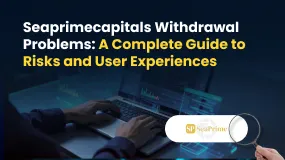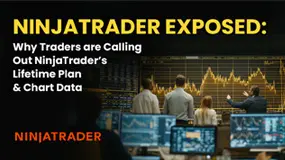简体中文
繁體中文
English
Pусский
日本語
ภาษาไทย
Tiếng Việt
Bahasa Indonesia
Español
हिन्दी
Filippiiniläinen
Français
Deutsch
Português
Türkçe
한국어
العربية
How to Manage Your Foreign Exchange Trades Like a Professional
Abstract:It takes more than simply knowing how to spot excellent deals and enter them effectively to become a great Forex trader. If you don't know how to manage your trades after they've been entered - when to alter the stop loss or take profit level, when to add or remove money from the transaction, and when to leave – you'll have a hard time making money in Forex. Join me as I teach you how to handle your Forex trades in the video below.

It takes more than simply knowing how to spot excellent deals and enter them effectively to become a great Forex trader. If you don't know how to manage your trades after they've been entered - when to alter the stop loss or take profit level, when to add or remove money from the transaction, and when to leave – you'll have a hard time making money in Forex. Join me as I teach you how to handle your Forex trades in the video below.
The 4 Stages of a Trade
It is important to distinguish the four main phases of a Forex trade – this way, you can test your skills on each phase and understand what needs more work and what does not. The 4 phases are:
l Trade identification: your setup conditions.
l Trade execution: your entry trigger.
l Trade management: what you do when your trade is “live”. Having a plan that considers the various scenarios that can materialise once your trade is live is essential to maintain a sense of control over your trading. It also allows you to respond to the various curve balls the market will throw at you. I will cover several plan components within the remainder of this article. At a very basic level, Forex trade management must give you the answers to the following questions:
1. What do I do if the trade reaches my profit objective quickly?
2. What do I do in case of reversal right after entry?
3. What do I do in case of an intra-trade drawdown?
4. What do I do in case the trade moves steadily in my favour (but without reaching the target) and then reverses?
5. What do I do if the market posts a reversal pattern?
Trade Exit: the decision to completely close the trade and wait for the next opportunity.
What Is the Importance of Forex Trade Management?
As a trader, trade management is critical to your survival. Consider the most significant equation you'll ever encounter in your trading career to understand why:
Expectancy = Average Win * Win% - Average Loss * Loss%
The average win and average loss are computed in “R-terms,” which are risk-adjusted return units. If your stop loss is 50 pips from your entry and you exit with 50 pips profit, you made 1R (50 pips profit / 50 pips risk).
Simply divide your profit by your risk each transaction to determine the “R” of a trade. Because trading is all about managing risk and producing superior risk-adjusted returns, you should now see why thinking about trade results in “R-terms” is preferable to thinking in dollars.
Returning to the expectation equation, achieving the goal of a constantly positive expectancy is difficult, but the formula explains how to achieve it:
Maintain the highest feasible Average Win/Average Loss Ratio (you are doing well if your average win is at least twice the size as your average loss)
Maintain as high a victory percentage as feasible (but over time, this will probably average close to 50 percent , which means that the key to profitability is averaging losses that are much smaller than your average win)
Because you will be more prone to making quick, emotional judgments if you don't have a clear plan, trade management is crucial. You will most likely lose money over time if your winning trades do not average at least 1R.
Another thing to consider is that if you keep your losses minimal in comparison to your wins, you will be considerably more calm because the minimum win rate required to avoid losing money will be lower. Here's the arithmetic to back it up:
Minimum Win Rate = 1/ (1 + Avg. Reward-to-Risk)
Which means that to be profitable:
An average return of 1R requires the win rate to be higher than 50%.
An average return of 2R requires the win rate to be higher than 33%.
An average return of 3R requires the win rate to be higher than 25%.
This hopefully sounds quite straightforward. However, there is something which complicates this calculation, and takes us back to the importance of trade management: risk and reward are not static, and both change during a trades life cycle.
Principles of Forex Trade Management in a Nutshell
The ideas of the trade management equation apply equally whether you are a mean-reversion (range) trader or a trend trader because:
A mean reversion trader will have a greater win rate but lower average winnings, thus trailing stops on a portion of the trade is a difficulty for them.
A trend trader will make significant profits but have a lower success rate, therefore the trick for them is to attempt to make some money right away while avoiding full stop-outs.
Trading Strategy for Foreign Exchange
Adjust your expectations based on the type of market you're in.
One last aspect to consider is if the market is trading in a range or a trend. The specific trade management technique you choose, as well as your trade expectations, should be based on a thorough grasp of market types: are we in a rangebound or trending market?
You can't anticipate trades to survive long in a range-bound market since the range barriers will almost certainly draw counter movement.
In a trending market, on the other hand, you may anticipate your trade to last longer if you try to roll it over and let it develop using trailing stops.
Here's another GBP/USD trading example from one of my students. The student was prepared to make a full trade exit at the prior support zone since “Cable” is obviously in a rangebound environment.
Conclusion
The third fundamental component of a solid trading methodology is trade management. Here are some guidelines to follow while developing the optimal trade management approach for your individual trading model:
Trade management should be employed in the same timeframe as when you first started trading.
If you're trading around a day job, consider executing and managing your trades from a 4H period at the very least.
Adapt your trading strategy to market conditions: if you're trading mean-reversion, try to maximize momentum on the first 2/3 of the position but run the last 1/3 with a trailing stop; if you're trading trends, try to maximize momentum on 1/3 of the position while trailing the stop on the other 2/3 as long as the trend lasts.
In any case, keep losses to a minimum by never allowing a big win to turn into a big loss.
Whatever you do, make sure your Forex trade management model is a process; otherwise, you'll be more inclined to make emotional decisions rather than reacting analytically to market signals.

Disclaimer:
The views in this article only represent the author's personal views, and do not constitute investment advice on this platform. This platform does not guarantee the accuracy, completeness and timeliness of the information in the article, and will not be liable for any loss caused by the use of or reliance on the information in the article.
Read more

Seaprimecapitals Withdrawal Problems: A Complete Guide to Risks and User Experiences
Worries about Seaprimecapitals withdrawal problems and possible Seaprimecapitals withdrawal delay are important for any trader. Being able to get your money quickly and reliably is the foundation of trust between a trader and their broker. When questions come up about this basic process, it's important to look into what's causing them. This guide will tackle these concerns head-on, giving you a clear, fact-based look at Seaprimecapitals' withdrawal processes, user experiences, and trading conditions. Most importantly, we'll connect these real-world issues to the single most important factor behind them: whether the broker is properly regulated. Understanding this connection is key to figuring out the real risk to your capital and making a smart decision.

iFX Brokers Review: Do Traders Face Withdrawal Issues, Deposit Credit Failures & Free Coupon Mess?
Have you had to pay several fees at iFX Brokers? Had your trading profit been transferred to a scamming website, causing you losses? Failed to receive withdrawals from your iFX Brokers trading account? Has your deposit failed to reflect in your trading account? Got deceived in the name of a free coupon? Did the broker officials not help you in resolving your queries? Your problems resonate with many of your fellow traders at iFX Brokers. In this iFX Brokers review article, we have explained these problems and attached traders’ screenshots. Read on!

NinjaTrader Exposed: Why Traders are Calling Out NinjaTrader’s Lifetime Plan & Chart Data
Did NinjaTrader onboard you in the name of the Lifetime Plan, but its ordinary customer service left you in a poor trading state? Do you witness price chart-related discrepancies on the NinjaTrader app? Did you have to go through numerous identity and address proof checks for account approval? These problems occupy much of the NinjaTrader review online. In this article, we have discussed these through complaint screenshots. Take a look!

World Forex Review: Does the Broker Deny Withdrawals and Scam Traders via Fake Bonuses?
Does World Forex prove to be a not-so-happy trading experience for you? Do you struggle to withdraw your funds from the Saint Vincent and the Grenadines-based forex broker? Do you witness hassles depositing funds? Failing to leverage the World Forex no deposit bonus, as it turned out to be false? These accusations are grabbing everyone’s attention when reading the World Forex review online. In this article, we have shared some of these. Read on!
WikiFX Broker
Latest News
Axi Review: A Data-Driven Analysis for Experienced Traders
INZO Regulation and Risk Assessment: A Data-Driven Analysis for Traders
GGCC Bonus and Promotions: A Data-Driven Analysis for Experienced Traders
Close Up With WikiFX —— Take A Close Look At Amillex
CapEx Spending On AI Is Masking Economic Weakness
Questrade Review Pros, Cons and Regulation
AccentForex Review: Is It Safe to Invest or Scam?
Cleveland Fed's Hammack supports keeping rates around current 'barely restrictive' level
Delayed September report shows U.S. added 119,000 jobs, more than expected; unemployment rate at 4.4%
The CMIA Capital Partners Scam That Cost a Remisier Almost Half a Million
Currency Calculator



